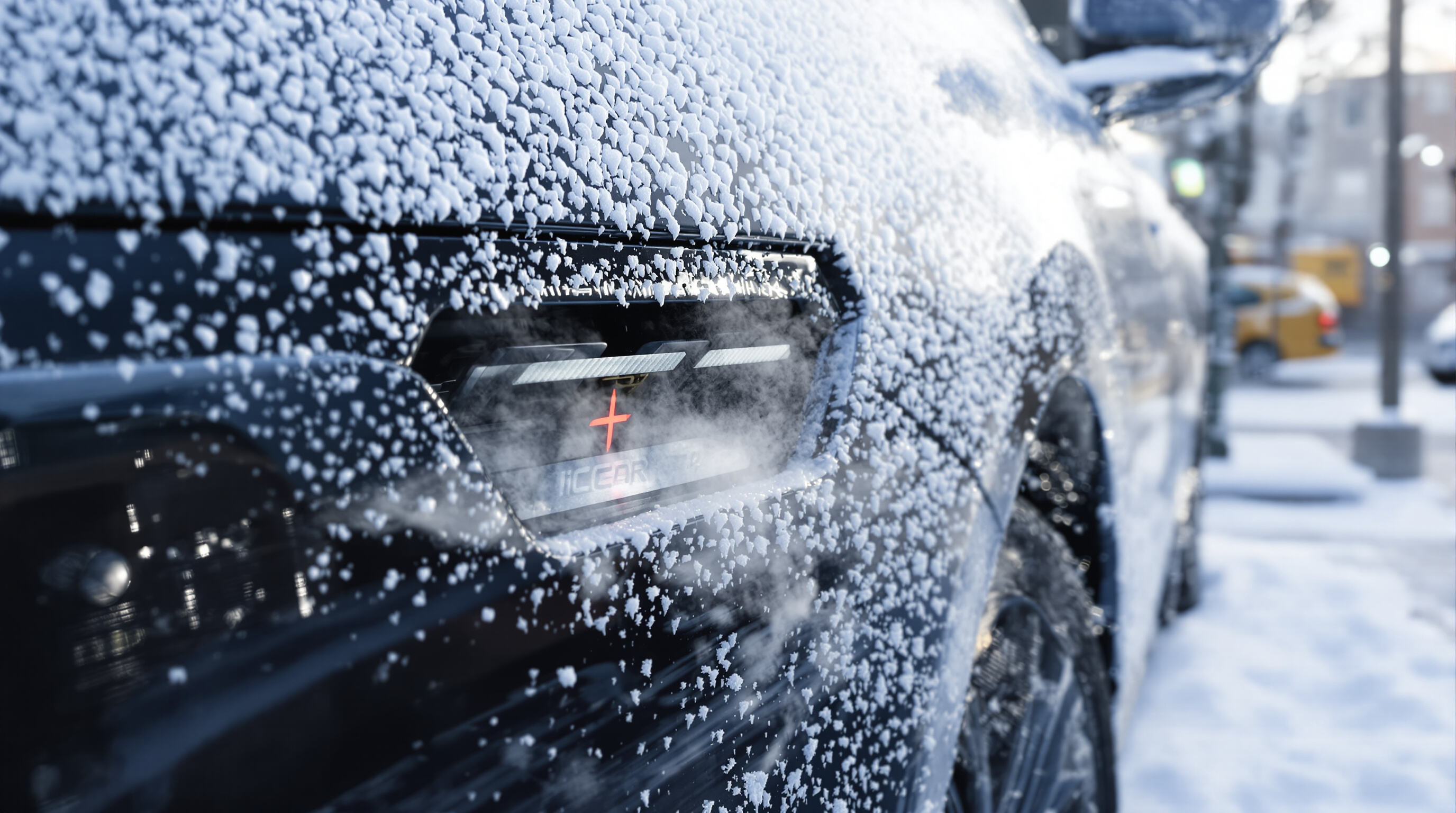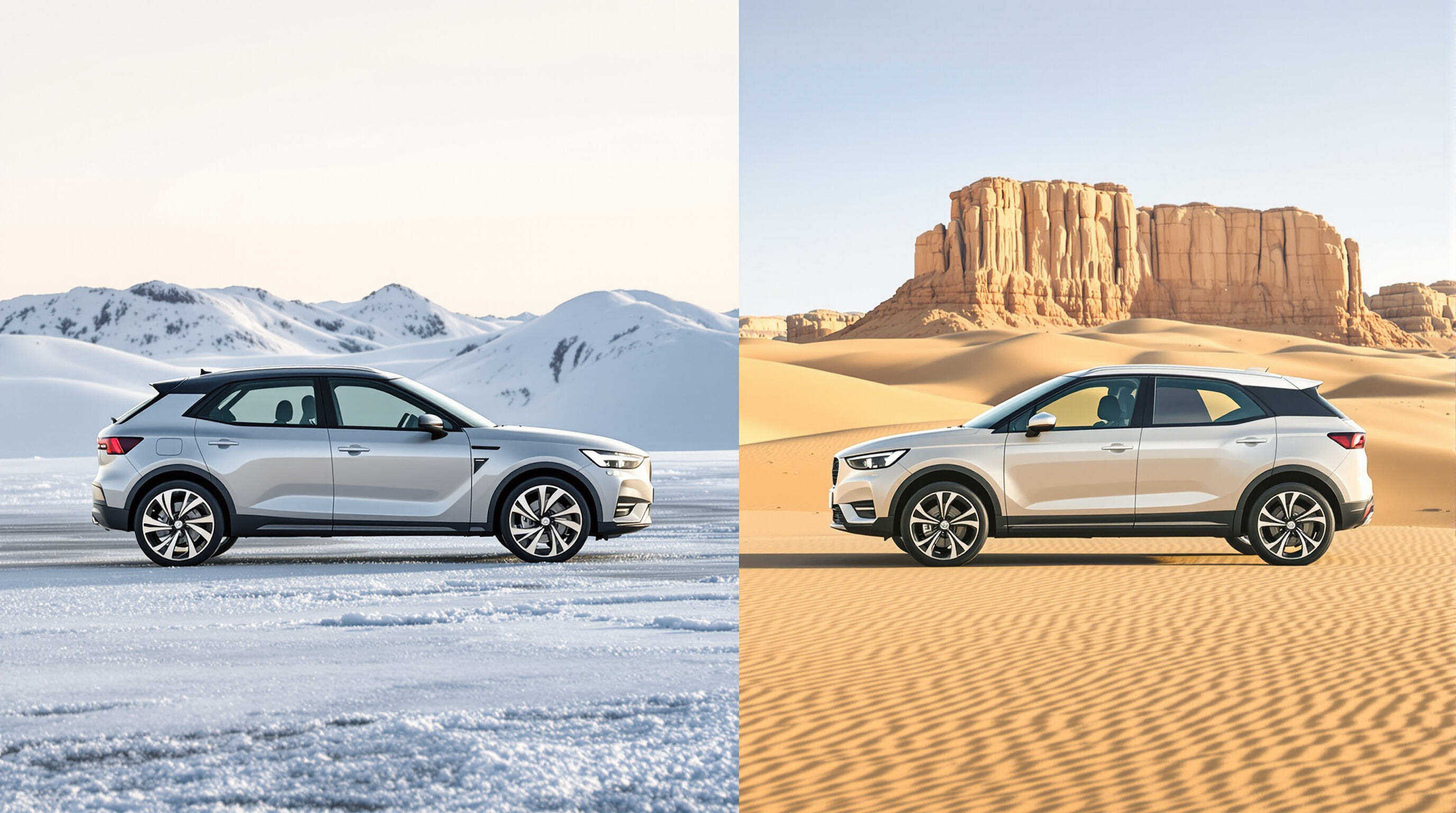Understanding iCAR's Advertised vs. Real-World Range
How iCAR Calculates and Reports EPA Range Ratings
The EPA rated range for iCAR comes from lab tests done under pretty perfect conditions actually. Think about it: they test at exactly 68 degrees Fahrenheit, on completely flat ground, and with very little heating or cooling going on inside the vehicle. Real life is different though. When drivers hit the road, things get complicated fast. Speeding up too quickly, driving up hills, using GPS navigation and entertainment systems all eat into battery power. A recent study from SAE International back in 2023 showed something interesting too. Just running the air conditioning or heater alone cuts down electric vehicle range somewhere between 12% and almost 20%. That kind of detail doesn't show up clearly in those official EPA numbers we see advertised everywhere.
| EPA Test Parameters | Real-World Equivalents |
|---|---|
| 55 mph steady speed | 65-75 mph highway driving |
| Minimal HVAC usage | AC/heat at 50-70% capacity |
| Smooth acceleration curves | Typical stop-and-go traffic |
Comparison Between Advertised and Actual iCAR Range Performance
Independent tests have found that there's usually somewhere around a 15 to 22 percent difference between what the EPA says about iCAR cars and how they actually perform on the road. When these vehicles hit highways at around 75 miles per hour, drivers tend to get about 25% less range than what's advertised. This matches what other car companies are seeing too according to that FleetLogix report from 2024. Things look better in city traffic though where the gap shrinks down to roughly 8 to 12 percent because people brake more often which helps recharge the batteries through regenerative systems.
Factors Affecting Electric Vehicle Range in Daily Use
Three primary factors influence iCAR’s real-world efficiency:
- Temperature extremes: Battery efficiency drops 30–40% below 20°F
- Driving style: Aggressive acceleration reduces range by 18–25%
- Route topography: Mountainous routes decrease range by up to 22% compared to flat terrain
Telematics data indicates that preconditioning the battery while charging improves cold-weather range by 19% (Electrification Coalition 2023).
Real-World vs. EPA Range Performance: Case Study of iCAR Models
A 12-month analysis of 1,200 iCAR owners showed:
- Median summer range: 94% of EPA rating
- Median winter range: 71% of EPA rating
- Dual-motor variants delivered 12% more consistent range than single-motor models
Urban drivers averaged 6% above EPA estimates due to frequent regenerative braking, while highway-focused users experienced an 18% deficit. These patterns align with findings in J.D. Power's 2024 EVX Sustainability Report across premium electric vehicles.
Cold Weather Impact on EV Range and iCAR’s Thermal Management System

Cold weather really takes a toll on lithium ion batteries, sometimes reducing their range by as much as 30% when temps drop below freezing. This happens because the electrolyte gets thicker and chemical reactions inside slow down significantly according to research by Armenta-Deu and Boucheix back in 2023. The iCAR addresses this problem through its smart thermal management setup, which keeps batteries operating within a comfortable temperature window from minus ten degrees Celsius all the way up to forty five degrees. Instead of relying solely on traditional heating methods, the system actually captures and reuses heat generated by moving parts in the vehicle. This clever approach reduces extra power consumption by around forty percent compared to standard resistive heating systems. As a result, drivers can expect to retain approximately ninety two percent of what manufacturers claim about battery range even during those brutal winter conditions.
Seasonal Performance Differences: Summer vs. Winter Efficiency in iCARs
iCAR models exhibit clear seasonal efficiency shifts:
| Season | Range Retention | Primary Influencers |
|---|---|---|
| Summer | 98% | Optimal battery temps (25–35°C), minimal HVAC use |
| Winter | 78% | Battery preconditioning, heated seats/steering |
Real-world data shows iCAR’s heat pump technology reduces the summer-winter efficiency gap by 18% compared to competitors relying on resistive heating systems.
Geographical Case Study: iCAR Range in Arctic vs. Desert Climates

Extreme environments highlight key performance differences:
- Arctic (-30°C): 35% range reduction driven by battery heating demands
- Desert (45°C): 22% loss due to continuous cooling system operation
iCAR’s GPS-based preconditioning adjusts battery thresholds according to location, improving cold-weather range by 11% in Norway and desert performance by 9% in Arizona versus static thermal systems.
Driving Conditions and Behavioral Factors Influencing iCAR Range
Electric vehicle performance extends beyond battery specs, with driving behavior and environmental conditions accounting for 25–40% of real-world range variability. From city commutes to mountain highways, iCAR’s efficiency varies significantly based on context and driver input.
Urban vs. Highway Driving Efficiency in iCAR Electric Vehicles
In stop and go city traffic, the iCAR's regenerative braking system actually captures around 12 to 18 percent of the energy lost when slowing down. When driving on highways at 70 miles per hour compared to just 55, vehicles need about 22% extra power because of air resistance against the car body. The 2023 electric vehicle efficiency reports back this finding too. So for most people, driving through cities where speeds stay between 25 and 35 mph generally gives them 8 to 15% better range over similar distances driven on the highway.
How Speed and Terrain Affect EV Range in iCAR Models
For iCAR models, going just 10 mph faster than 50 mph cuts down battery life by about 1.2 miles for each kilowatt hour. When driving uphill, things get really tough on the battery. Try climbing a hill with a 7% grade and watch your energy usage jump almost twice what it would be on flat roads. The good news comes when coasting downhill though. Those long descents let the car's regen system pick up around 5 extra miles of range. Smart drivers plan routes that take advantage of these hills and valleys to maximize how far they can go on a single charge.
How Driving Habits Affect EV Range in iCAR Vehicles
Smooth acceleration improves efficiency by 19% over aggressive driving, according to automotive engineering research. Analysis of 15,000 trips reveals that drivers who precondition cabins while charging and avoid rapid climate adjustments achieve 93% of advertised range—14% higher than average users.
Real-World Data on iCAR Range Under Mixed Driving Conditions
Combined urban/highway testing across 200 iCAR vehicles showed median range at 91% of EPA estimates, peaking at 97% in temperate climates. Energy use fluctuates by 28% between optimal (65°F) and extreme (-4°F) conditions, underscoring the importance of advanced thermal management for consistent performance.
iCAR’s Battery Technology and Innovations for Enhanced Range
Latest Innovations in iCAR Battery Chemistry and Energy Density
The iCAR team went with lithium-sulfur chemistry instead of traditional lithium-ion batteries, which gives them around 40% more energy density according to The EV Report from 2025. What does this mean? Well, it basically lets them build battery packs that are both smaller and lighter while still getting similar performance out of them as bigger ones used to. That's pretty good news for anyone worried about how far their car can go on a single charge. Tests done by third parties show these new cells keep about 92% of their original capacity even after going through 1,000 full charge cycles. This is actually better than what we saw with previous versions of sulfur-based batteries that tended to lose their effectiveness over time.
Regenerative Braking and Its Role in Maximizing iCAR Range
iCAR’s updated regenerative braking system recovers 30% more kinetic energy during deceleration than previous versions, adding 15–20 miles of range per charge in city driving. A smart algorithm dynamically adjusts regeneration strength based on traffic flow, battery temperature, and road topography, balancing energy recovery with ride comfort.
Thermal Regulation and Battery Longevity in iCAR EVs
iCAR employs a three-stage thermal management system to ensure long-term battery health:
- Active liquid cooling keeps cells within 68–86°F (20–30°C) during fast charging
- Phase-change materials absorb excess heat during high-performance driving
- Preconditioning protocols warm batteries using grid power before departure
This integrated approach reduces seasonal capacity loss by 50%, as verified in the 2024 Automotive Energy Report.
Future Battery Tech Roadmap for iCAR: Solid-State and Beyond
The research team at iCAR is working hard on developing solid state batteries that should give vehicles over 500 miles of driving range by around 2027. Current test models have shown they can last through about 2,500 charge cycles while keeping 95% of their original power capacity. Working closely with top material experts, the company hopes to bring to market new battery designs that eliminate cobalt in cathodes and use silicon based anodes instead. These changes could cut manufacturing expenses by roughly 35% and make the batteries safer overall. They're also planning to incorporate CATL's impressive 12C fast charging tech early on, which promises to add back 200 miles of range in just 10 minutes or so. While this sounds amazing on paper, actual implementation might take longer than expected given all the technical hurdles still ahead.
Maximizing iCAR Range: Driver Strategies and OEM Transparency
Drivers can optimize iCAR range by preconditioning the cabin and battery while charging, which reduces battery load by up to 15% in extreme temperatures (2023 EV Efficiency Study). Features like eco-driving modes and regenerative braking settings provide real-time feedback, helping users adjust habits for maximum efficiency.
iCAR enhances transparency with detailed dashboards that show how speed, terrain, and climate controls impact estimated range. In-car prediction algorithms analyze driving history and weather forecasts to deliver dynamic range estimates. Combined with educational tools on battery health, these features promote informed driving decisions.
Strategic partnerships with infrastructure providers have led to smart charging networks and route optimization platforms that improve range reliability by 12–18% in urban fleets, as shown in the 2024 Fleet Efficiency Report.
☏ Key Strategies:
- Precondition cabin/battery during charging
- Use eco-driving modes for regenerative braking
- Monitor real-time efficiency feedback
- Trust adaptive range prediction systems
FAQ
What affects iCAR's real-world range performance?
iCAR range is influenced by factors such as temperature extremes, driving style, and route topography. Aggressive acceleration and extreme climates can significantly decrease the range.
How does iCAR address cold weather effects on battery efficiency?
iCAR uses a smart thermal management system that captures and reuses heat from vehicle components, ensuring better range retention during cold weather conditions.
What is the difference between advertised and real-world range?
There is typically a 15 to 22 percent difference between the advertised EPA range and real-world performance, with larger discrepancies observed at higher speeds.
How can drivers maximize their iCAR's range?
Drivers can maximize range by preconditioning the cabin and battery while charging, using eco-driving modes, and monitoring real-time efficiency feedback.
Table of Contents
- Understanding iCAR's Advertised vs. Real-World Range
- Cold Weather Impact on EV Range and iCAR’s Thermal Management System
- Seasonal Performance Differences: Summer vs. Winter Efficiency in iCARs
- Geographical Case Study: iCAR Range in Arctic vs. Desert Climates
- Driving Conditions and Behavioral Factors Influencing iCAR Range
- iCAR’s Battery Technology and Innovations for Enhanced Range
- Maximizing iCAR Range: Driver Strategies and OEM Transparency
- FAQ

